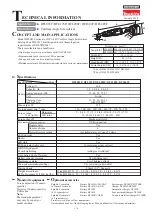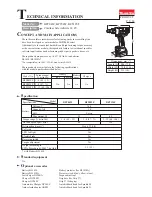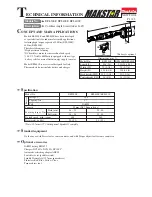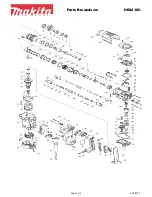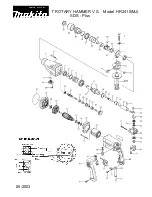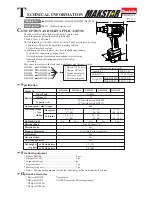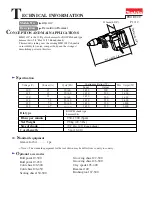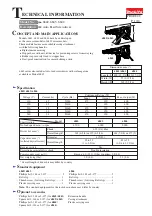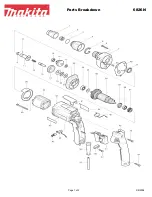
22
HPF24S Series Power Supplies —
P/N 52751:D3 5/11/2010
Programming Options
Programmable Features Description
3.2 Programmable Features Description
3.2.1 Synchronization Type Selection
Synchronization is a feature that controls the activation of notification appliances in such a way that
all devices will turn on and off at exactly the same time. This is particularly critical when
activating strobes which must be synchronized to avoid random activation and a potential hazard or
confusion. The HPF24S can be programmed to operate with a variety of manufacturer’s devices.
Note that strobe synchronization works only with non-coded NACs.
DIP switches 1 and 2 are used to select the type of synchronization as listed below:
Maximum Number of Strobes for Synchronization
The total current draw for each Notification Appliance Circuit cannot exceed 3.0 amps. Refer to
the manufacturer’s documentation supplied with the strobes to determine the maximum current
draw for each strobe and ensure that the circuit maximum is not exceeded.
To ensure proper strobe and circuit operation, there is also a limit to the number of strobes that can
be attached to each circuit. Following is a table of the strobes that have been tested with the power
supply and the maximum number that can be connected to each NAC when using the lowest
candela setting.
Make sure that the NAC maximum current is not exceeded:
3.2.2 Synchronization Mode - Master/Slave
The HPF24S power supply can be configured for Master or Slave Synchronization by setting DIP
switch 3 ON for Slave or OFF for Master mode. In some installations, it is necessary to
synchronize the flash timing of all strobes in the system for ADA compliance. Strobes accomplish
this by monitoring very short timing pulses on the NAC power which are created by an FACP with
synchronization capability. When installed at the end of an NAC wire run, this power supply can
track (that is follow) the strobe synchronization timing pulses on the existing NAC wire run. This
maintains the overall system flash timing of the additional strobes attached to this power supply.
When this power supply is configured as a
sync generator
(Master Synchronization mode), the
Sync Input terminals are not used. The power supply is the originator of the strobe synchronization
pulses on its NAC outputs. In
sync generator
mode, the sync type (System Sensor, Wheelock, or
Gentex) is selectable via DIP switches 1 and 2.
When this power supply is configured as a
sync follower
(Slave Synchronization mode), the power
supply’s NAC outputs track the strobe synchronization pulses present at the supply’s Sync Input
terminals. The pulses originate from an upstream FACP or other power supply. Some FACPs
provide synchronization timing pulses from a dedicated sync output connector. Connect the
HPF24S sync input terminals to the FACP sync output connector instead of the FACP NAC.
Note that the Synchronization Type configured by DIP switches 1 and 2 must be set to the same type
as the signal being fed to the Sync Input circuit in the event that Selective Silence is employed.
DIP Switch 1
DIP Switch 2
Synchronization Type
OFF
OFF
no synchronization (steady 24V)
OFF
ON
System Sensor
ON
OFF
Gentex
ON
ON
Wheelock
Table 3.2 Sync Type Settings
Strobe Manufacturer
HPF24S6 (max. strobes)
HPF24S8 (max. strobes)
System Sensor
51
51
Wheelock
30
40
Gentex
39
39

































